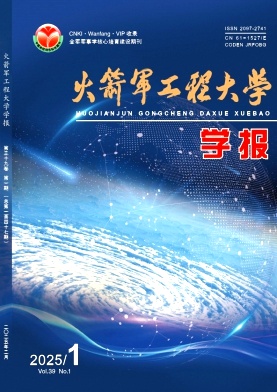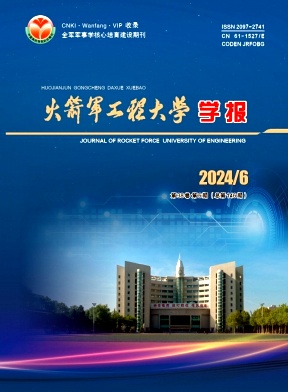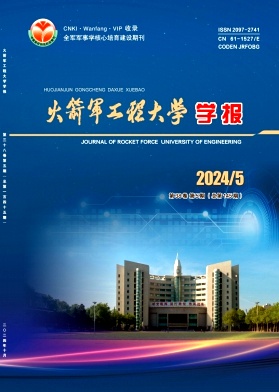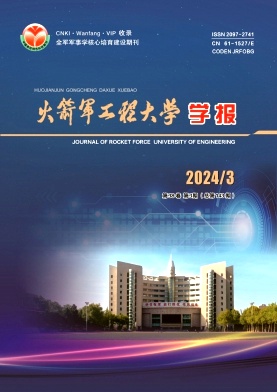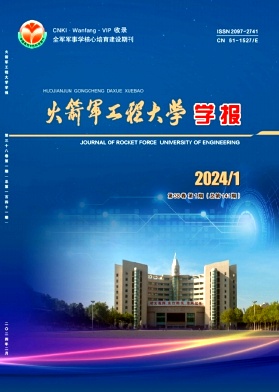System login
Journal Information

Regulations
Publishing Papers on Domestic Topics and Journals
President Xi: On Running First-Class Academic Journals and Platforms
Opinions on Deepening Reform and Cultivating World-Class Scientific Journals
Regulations on Periodical Publishing Management
Notice on Standardizing Publication Order of Academic Journals and Promoting Healthy Development of Academic Journals
more..Policies and Forms
Links
Page Views
今日访问量: 0
Recommended
3D Gaussian Splatting-based Aerial Video Scene Modeling
HE Tianqi;SONG Jiajie;CHENG Jingchun;PAN Xiong;To solve the problems of data scarcity and lack of modeling details in existing algorithms in the modeling of aerial video scenes, a flight scene data acquisition method based on simulation engines was proposed. The advanced 3DGS(3D Gaussian Splatting)algorithm was adopted to model and render aerial scenes. First, simulation engines were used to obtain datasets for different flight trajectories, speeds, and environmental conditions in three typical scenes(urban areas, beaches, and river bridges), and to obtain samples of aerial video frames. In addition, the sparse modeling of the scenes was realized through the motion recovery structure, and the 3DGS algorithm was used for dense modeling and rendering of the scenes. Finally, quantitative comparison and qualitative analysis experiments of the models were conducted. The results show that compared with the classical COLMAP algorithm, the proposed algorithm has better modeling results and more complete image details. Higher image quality can be obtained in different flight trajectories(linear, grid, and spiral), while achieving better scene universality in spiral trajectories. Higher-quality modeling results can be obtained when the flight speed is below30 m/s(PSNR>32 dB, SSIM>0.93, LPIPS<0.13). Furthermore, high image quality can be achieved under different environmental conditions, and the best quality is achieved under ideal light during the daytime of sunny days. A high-precision and high-robustness modeling solution for aerial videos with difficulties such as flexible positions, fast flight speeds, and large scenes is provided in this paper.
Fault Diagnosis Method for Industrial Equipment Based on Extended Belief Rule Base
FENG Shucheng;HE Wei;MA Ning;ZHOU Guohui;To address the problems of large sample sizes and complex parameters in industrial equipment fault diagnosis, a novel EBRB(Extended Belief Rule Base)model was proposed.This model had excellent interpretability and rationality, making it easy for technical personnel to make reliable decisions based on model outputs. First, the model employed the eXtreme Gradient Boosting method to assess the importance of numerous features and selected the most diagnostically-relevant ones, effectively reducing the dimensionality of the problem. Then, in the inference stage, the projection covariance matrix adaptive evolutionary strategy method was introduced to optimize the parameters, thereby improving the model's performance. Finally, in the output stage, a threshold-based approach was adopted to limit the number of activated rules, and an improved evidential reasoning engine was utilized to enhance inference efficiency and accuracy. The experimental results indicate that the proposed EBRB model performs exceptionally well in multiple fault diagnosis tasks. In the fault diagnosis of rolling elements, it achieves an accuracy of 98.15%, tying for first place with the K-nearest neighbors model. In the fault diagnosis of the inner circles, the model attains an accuracy of 90.74%, surpassing all the other comparative models. In the fault diagnosis of the outer circles, the model achieves an accuracy of 88.89%, which exceeds that of other comparative models. The results verify the high accuracy and robustness of the model in complex industrial equipment fault diagnosis tasks, thereby providing a new effective solution in the field of industrial equipment fault diagnosis.
Health Assessment Method for Inertial Navigation Systems with Consideration of Test Impact
XIONG Zilong;CAO Zhe;To address the influences of test impact, data model imbalance, and expert knowledge uncertainty on the health assessment accuracy of INS(Inertial Navigation System), a BRBT(Belief Rule Base with Test Impact)model was proposed. First, the cumulative number of tests and power-on time were introduced to reflect the test impact on INS health assessments. A test impact conversion method based on self-measurement was proposed to convert the test frequency and power-on duration, which were indicators at two different levels, into a unified measurement framework. Subsequently, based on the BRB-T model, a new health assessment method for aircraft INS with consideration of test impact was proposed to improve the accuracy of the health assessment of aircraft INS under multiple power-on tests. In the BRB-T model, expert knowledge was achieved through the process of constructing expert rules. Complementary enhancement of knowledge data was achieved by optimizing and adjusting the model parameters using a small amount of disequilibrium data. Finally, the effectiveness of the proposed method was verified using the INS of a certain type of aircraft. The results show that the health assessment error of the proposed method is 0.0131, which improves the accuracy by 59.06% and 69.61% respectively compared with data/knowledge-driven methods, such as neural networks and fuzzy reasoning,demonstrating the effectiveness of the proposed method.
Ablative Resistance of Fine-weave Pierced C/C-SiC Composites
WANG Shouhao;YU Annan;ZHANG Zhaofu;GE Qiang;SUN Jiantao;LI Ruizhen;Hypervelocity Aerodynamics Institute of China Aerodynamics Research and Development Center;Fine-weave pierced C/C-SiC composites were fabricated via a combined process of CVI(Chemical Vapor Infiltration)and PIP(Precursor Infiltration and Pyrolysis)by piercing stacked carbon cloths with carbon fiber yarns. The ablative resistance of C/C-SiC in carbon cloth stacking and piercing directions were evaluated under the(3.2±0.32)MW/m2 oxyacetylene ablation test. The ablative surface and cross-section of the composites were characterized by SEM( Scanning Electron Microscope). The results show that the linear ablative rates of the the C/CSiC composites in the stacking and piercing directions are(1.67±0.23)μm/s and(2.39±0.22)μm/s, respectively; while the mass ablative rates are(2.33±0.09)mg/s and(1.46±0.19) mg/s, respectively. When the heat flux is perpendicular to the carbon cloth stacking direction of the composites, the SiO2generated after the oxidation of the SiC matrix forms a relatively contin-uous oxide film on the surface of the carbon fiber bundle and the adjacent matrix. It can effectively block further oxidation and ablation of the material via a high-temperature heat flux. When the heat flux is parallel to the carbon cloth stacking direction of the composites, the less SiC distribution in the pierced yarn causes the carbon fiber to significantly ablate in the high-temperature oxidizing environment, resulting in obvious ablation pits at the end of the pierced carbon. The distribution mode of the SiC matrix and the microstructural characteristics of the composites are the main factors responsible for the differences in the ablation resistance of the fine-weave pierced C/C-SiC composites in different directions.
SINS/GNSS Vehicle Gravity Measurement Method Based on Altimeter Position Correction
ZHANG Zhili;ZHANG Kefan;ZHAO Junyang;Ground obstacles, such as tunnels, overpasses, valleys and dense forests, obstruct the GNSS(Global Navigation Satellite System)antenna from outputting positioning information. These affect the accuracy of gravity measurement when conducting gravity anomaly measurement tests using vehicles as the moving base. Thus, this study posed a dual-axis rotating SINS(Strapdown Inertial Navigation System)/global navigation satellite system centralized filtering vehicle mounted gravity measurement method based on altimeter position correction. First,the GNSS signals were detected and automatically corrected using the altitude output of the altimeter, which solved the problem of GNSS signal jump and vacancy. Second, the modified GNSS information was used to calculate the integrated navigation and gravity measurement correction term, and the gravity anomaly of the survey line was extracted using a strapdown inertial scalar gravity measurement model. Finally, adopting the gravity anomaly of the survey line calculated using the EGM2190 model as a reference value, the external coincidence accuracy of the gravity anomaly of the survey line after low-pass filtering was evaluated. The results show that compared with traditional SINS/GNSS methods, the proposed method has an obvious accuracy advantage.
Variable Weighting Factors-based Layered Stability Control of Linear Quadratic Regulator Multi-axle Special Vehicles
CHENG Hongjie;HOU Zhenwei;LIU Zhihao;LI Jianhua;ZHAO Yuan;LIU Xiuyu;To enhance the steering flexibility and driving stability of multi-axle special vehicles under two extreme conditions of high-speed maneuvering with high and low road attachments, a layered integrated stability control system was proposed. It used a heavy-duty 5-axle special vehicle as the subject, and was based on a hierarchical control structure. The upper-level controller calculated the active steering angle and additional yaw moment control of the rear wheels using the LQR(Linear Quadratic Regulator)control strategy. The relationship between the weight matrix and road adhesion coefficient was established using fuzzy control rules. The lower-level controller achieved the optimal control allocation of the wheel driving torque using the interior method with few iterations and high realtime performance. The effectiveness of the proposed control strategy was verified using the Trucksim-Simulink co-simulation platform. The results show that under low-attachment and high-speed steering conditions, the deviation of the yaw rate and centroid slip angle of the variable-weight LQR integrated control vehicles are reduced by 89.7% and 85.67%, respectively, compared to uncontrolled vehicles. When compared to vehicles controlled by PID(Proportional-Integral-Derivative) control, these values decrease by 51.72% and 57.38%, respectively. Under high-attachment and high-speed conditions, the deviations of the yaw rate and centroid slip angle of the variable-weight LQR integrated control vehicles are reduced by 85.08% and 98.63%, respectively, compared to uncontrolled vehicles. Compared with the PID-controlled vehicles, these values decrease by 42.96% and 73.48%, respectively. Under the above two conditions, the LQR-based control system outperforms the PID control system in terms of control accuracy and response speed, and significantly reduces the input requirements. It provides a reference for the stability analysis and performance optimization of multiaxle special vehicles.
Precision Assembly and Adjustment Technologies of High-precision Adjustable Focusing Objective Lens
ZHENG Shan;ZHANG Yage;ZHANG Li;WANG Shuai;HU Xiaoying;To address image quality degradation caused by error accumulation during the assembly of high-precision adjustable-focus objective lenses,a precision assembly method based on assembly and adjustment technology was proposed. The assembly accuracy and stability of the optical system were improved by optimizing the assembly process and controlling key parameters.First, an optical system model was established based on the Zemax simulation software, and the sensitivity of the lens eccentricity and tilt of the lens group to the image quality was determined by sensitivity analysis of the MTF(Modulation Transfer Function). During the implementation phase, a centering lathe was used for the initial centering of optical components, ensuring that the coaxiality error of the lens group was≤10 μm in a single clamping. The posture of the lens group was dynamically monitored and quantitative feedback was provided using a center deviation measurement instrument. Micron-level adjustment of the optical axis deviation was achieved, ensuring that the eccentricity was≤20 μm and the tilt angle was≤30″. The results show that the proposed method significantly reduces the nonlinear interference of assembly errors on the imaging quality of optical systems by combining standardized assembly and adjustment processes with quantitative evaluation systems. Compared with traditional coarse adjustment methods, the proposed method reduces the wavefront aberration of the adjustable-focus objective lens from 0.10 λ(λ=632.8 nm) to below 0.06 λ. The MTF values(at 30 lp/mm) at 3 object distances of 1, 2,and 3 m reach 0.64, 0.68, and 0.62, respectively, representing an improvement of over 40%compared to the pre-optimization levels.


